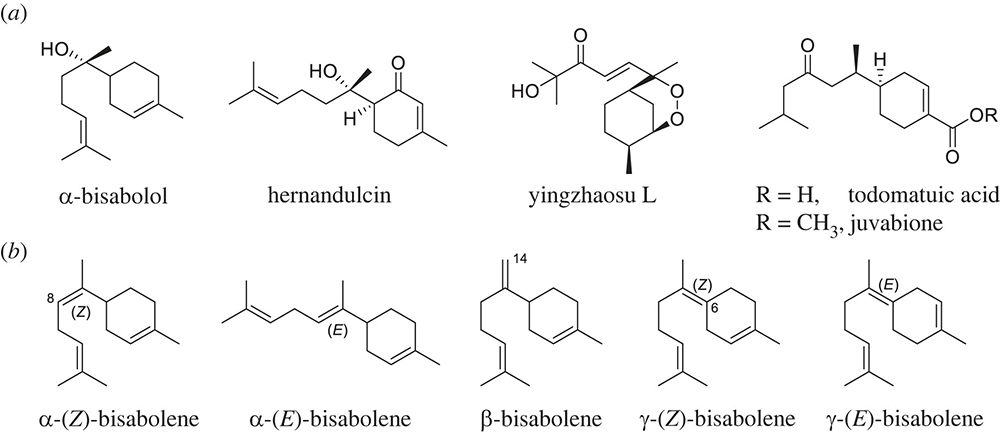
 中央研究院 生物化學研究所
中央研究院 生物化學研究所
Terpenoids represent the largest structural family of natural products (NPs) and have various applications in the pharmaceutical, food and fragrance industries. Their diverse scaffolds are generated via a multi-step cyclization cascade of linear isoprene substrates catalysed by terpene synthases (TPSs). Bisabolene NPs, which are sesquiterpenes (C15), have wide applications in medicines and biofuels and serve as bioactive substances in ecology. Despite the discovery of some canonical class I TPSs that synthesize bisabolenes from plants, bacteria and insects, it remained unknown whether any bisabolene synthases from fungi could produce bisabolenes as a main product. Antrodia cinnamomea, a Basidiomycota fungus, is a medicinal mushroom indigenous to Taiwan and a known prolific producer of bioactive terpenoids, but little is known regarding the enzymes involved in the biosynthetic pathways. Here, we applied a genome mining approach against A. cinnamomea and discovered two non-canonical UbiA-type TPSs that both synthesize (+)-(S,Z)-α-bisabolene (1). It was determined that two tailoring enzymes, a P450 monooxygenase and a methyltransferase, install a C14-methyl ester on the bisabolene scaffold. In addition, four new bisabolene derivatives, 2 and 4-6, were characterized from heterologous reconstitution in Saccharomyces cerevisiae. Our study uncovered enzymatic tools to generate structurally diverse bisabolene NPs. This article is part of the theme issue 'Reactivity and mechanism in chemical and synthetic biology'.
